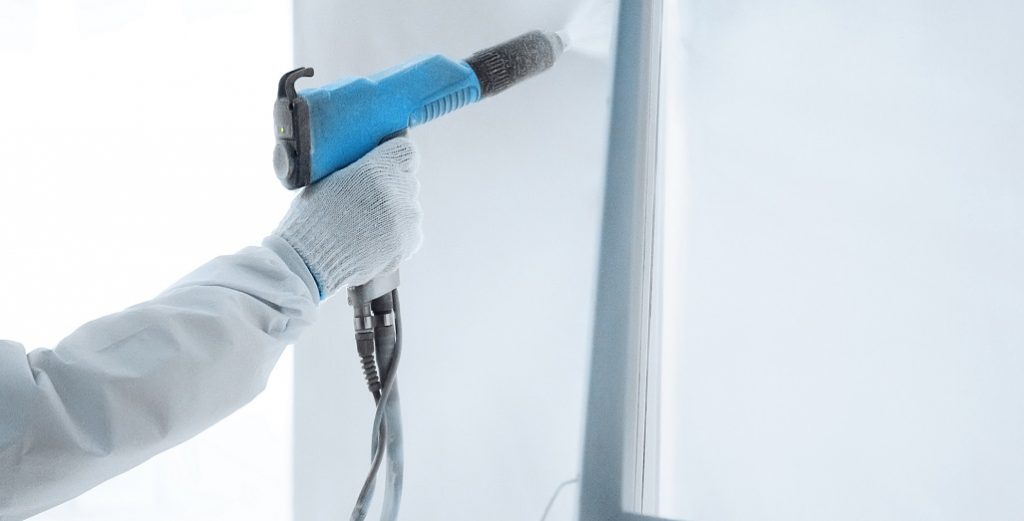Fluoropolymers are synthetic plastics, rubbers, or resins with valuable attributes that provide suitable protective coatings for various industrial applications. Many metals including aluminum, brass, cast iron, copper, stainless steel, and steel alloys can be coated or treated with fluoropolymer resins, as well as many non-metallic media such as glass, fiberglass, plastics, and rubber.
Fluoropolymers offer durability, strength, non-stick properties, resistances to chemicals, electricity, heat, salt, and water, and they work within extremely harsh conditions. To coat something with a fluoropolymer almost always means a guaranteed improved resistance to corrosion that will protect any equipment from damage or weathering.
Here are a few comparisons of coatings to get a feel for what fluoropolymer coating you should use:
PTFE (also known as polytetrafluoroethylene)
Pros:
● PTFE has the highest operating temperature among fluoropolymers, with a max operating temperature of 500 degrees Fahrenheit (260 degrees Celsius).
● PTFE has an extremely low coefficient of friction, excellent chemical resistance, and good abrasion resistance.
● PTFE is also chemically safe in cryogenic temperatures and its superior “non-stick” property means pollutants will not stick to its coating.
● PTFE’s excellent dieletric stability makes it a great insulating material and since it absorbs insignificant amounts of water, it can be applied in damp, polluted environments.
● PTFE is readily available and used in numerous industries, including semiconductor, aerospace, construction, pharmaceutical and medical device industries.
Cons:
● PTFE can become porous, so it is possible that solvents can attack metal underneath the coating over time.
● Its chemical resistance is high, but molten alkali metals could affect its surface at elevated pressures and temperatures.
PFA (also known as perfluoroalkoxy alkane)
Pros:
● Like PTFE, PFA offers high temperature resistance and chemical inertness.
● Unlike PTFE, which is a sinter-process, PFA is melt-process, so it can be formed with traditional injection molding principles while in a molten state.
● Like PTFE, coatings made from PFA can operate at service temperatures from 500 degrees Fahrenheit (260 degrees Celsius) to -436 degrees Fahrenheit (-260 degrees Celsius).
● PFA has a superior creep resistance, which means it can return to its original shape after deforming under extremely high stress.
● It also has excellent stress crack resistance, a low coefficient of friction, and excellent flexibility.
● PFA has greater material toughness characteristics than other plastics within the fluoropolymer family.
● PFA has good translucence optical clarity characteristics.
● It is ideal for extreme high- or low-temperature environments as well as high-stress settings.
● PFA is commonly used in the chemical and semiconductor processing industries, as well as laboratory components.
Cons:
● PFA has a higher cost factor relative to other fluoropolymer coatings. Relative to PTFE, one should not be surprised with a 2x to 3x increased cost factor.
ECTFE (also known as ethylene-chlorotrifluoroethylene)
Pros:
● ECTFE, also known under the brand name Halar® is a melt-process polymer, like PFA.
● ECTFE has excellent chemical resistance and weather resistance, as well as excellent permeation resistance to carbon dioxide, chlorine gas, and oxygen.
● ECTFE has high tensile strength, high density, good insulation properties, and very good sliding properties, with an extremely smooth surface.
● It has extremely high impact strength at temperatures ranging from 300 degrees Fahrenheit to -100 degrees Fahrenheit.
● It is easier to fabricate relative to other fluoropolymers, with conventional welding equipment.
● It’s food safe.
Cons:
● ECTFE is susceptible to stress cracking at temperatures above 284 degrees Fahrenheit.
● Like PFA, it is more expensive relative to other fluoropolymers.
Of course, the above are only a few of the many fluoropolymer coating options available. Each unique application should be reviewed to identify the best fluoropolymer coating option. Contact the team at iPolymer for assistance with all your fluoropolymer coating needs. iPolymer specializes in catalog and custom engineered solutions with fluoropolymer plastics.
